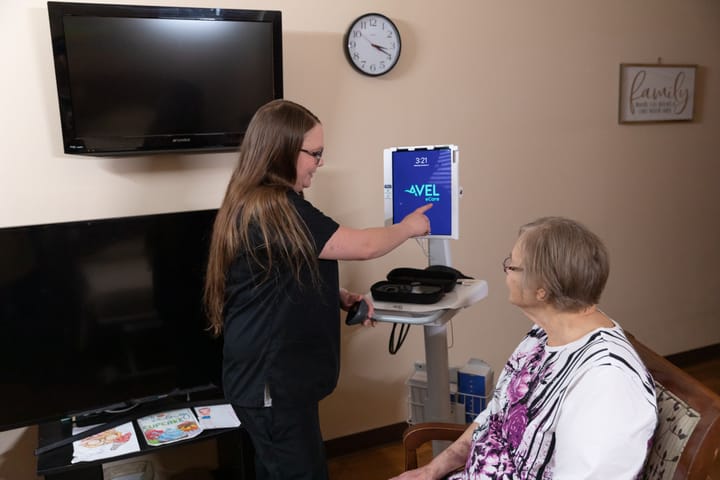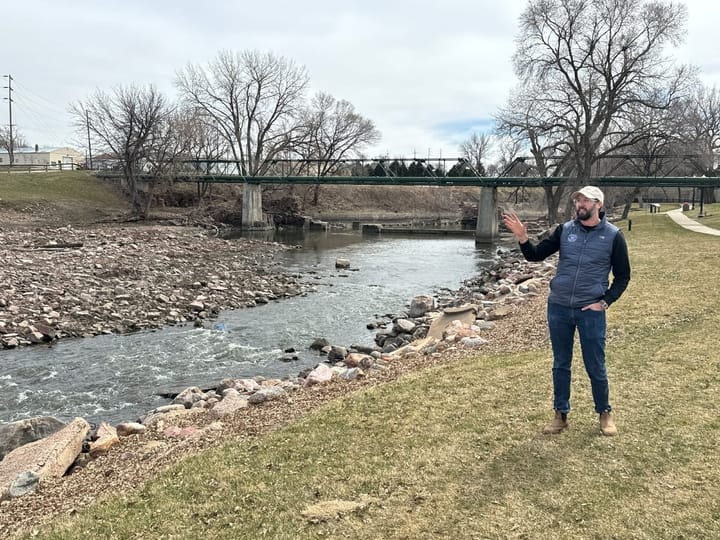Special report: Proposed CO2 pipelines thrust South Dakota into billion-dollar debate over carbon capture technology and climate change
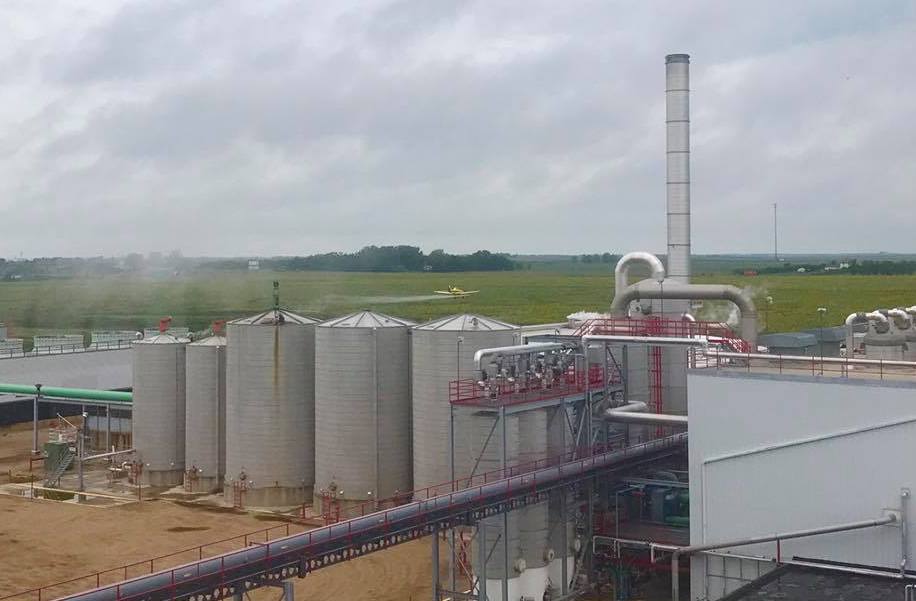
Editor’s note: This article was produced through a partnership between South Dakota News Watch and the Solutions Journalism Network, a national non-profit group that supports rigorous journalism about responses to problems. This is Part 1 of a two-part series; Part 2 publishes May 10, 2022.
So far, most of the discussion about two proposed multibillion-dollar carbon dioxide pipelines that would cross hundreds of miles of eastern South Dakota has centered on opposition by landowners whose properties would be affected by the digging and laying of underground pipes carrying a potentially dangerous chemical.
Those farmers and rural families have valid concerns, especially those who have already endured the upheaval caused by the Dakota Access Pipeline, which was laid in some cases very near the same route as the proposed CO2 pipelines.
The two separate pipeline projects, proposed by Summit Carbon Solutions and Navigator CO2 Ventures, both based in Iowa, are in the early stages of planning and permitting, and both hope to be operational in 2024. Both projects seek to use carbon-capture and sequestration technology, or CCS, to collect CO2 from ethanol plants and ship it in liquid form through miles of pipelines to sites where it will be buried and held deep underground.
Pipeline construction tears up land owned in some cases for generations by the same families; there’s an inherent risk of leakage; farmland is turned over and taken out of production; drain-tile systems and water-flow patterns can be affected; and payments for use of the land are far from life-changing. Hundreds of South Dakota landowners have signed up to address state regulators about the Summit project, many in strong opposition.
However, another battle is brewing over CCS on a much larger scale. The expansion of CCS projects across the U.S. is raising concern among some experts who say the new investment into CCS has the potential for long-range negative consequences — not only for the states directly affected by CO2 pipelines, but also for the U.S. economy and indeed for the environment of the entire planet.
A fundamental question among climate-change scientists is whether the practice of CCS, the process at the heart of the two proposed pipeline projects, is the best way forward in the effort to reduce carbon emissions into the atmosphere. Also in play, however, is the debate over the cost, and whether spending billions on carbon-capture technology is the best use of taxpayer money and industry investment in the broader effort to reach net-zero emissions of greenhouse gases and ultimately better protect the planet from climate change. Some argue that focusing time, money and resources on CCS to mitigate climate change could slow more effective efforts to protect the earth.
In CCS, carbon emitted by industrial plants is captured at the source rather than being emitted into the atmosphere. The carbon dioxide is then pressurized into a liquid that is transported through underground pipelines to storage areas far beneath the earth’s surface.
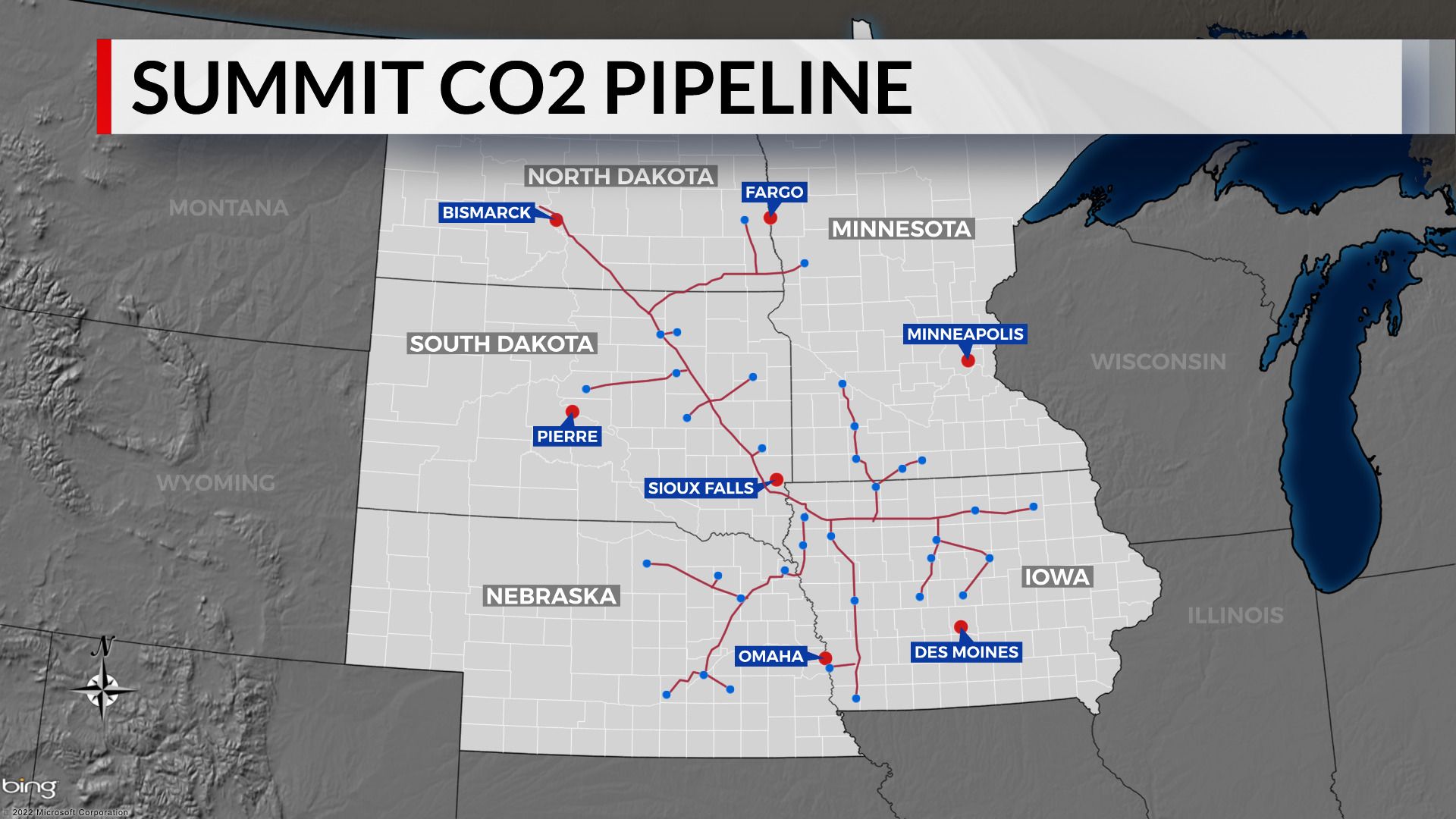
Pros and cons of carbon capture and sequestration
On a most basic level, supporters of CCS say it is one proven and relatively expedient way to begin preventing large quantities of CO2 from entering the environment and to reduce greenhouse gases that cause climate change. They also argue it will benefit and extend the life of the ethanol industry, which creates corn-based additives that can reduce the impact of fossil fuels burned in cars and trucks.
Officials with the two CCS pipeline projects that would pass through South Dakota add that their multibillion-dollar projects will create jobs in rural areas, generate millions in tax dollars for state and local governments, and strengthen rural economies across the Midwest.
Some supporters of the process acknowledge it isn’t perfect, and note that it is far from an overall solution to reducing carbon emissions and slowing climate change.
However, if the two proposed pipeline projects can keep nearly 30 million tons of carbon dioxide a year from the atmosphere, as projected, that fact alone makes them highly valuable, said Matthew Fry, a policy analyst on carbon issues for the Great Plains Institute, a Minnesota-based independent, nonprofit think-tank focused on energy and climate.
“We’re going to transition away from fossil fuels eventually, but it isn’t going to happen in my lifetime … because we just can’t meet our requirements as humans at this point to immediately switch to full non-carbon emission industry or energy resources,” Fry said. “So in the space of transition before we can go full green, we’re going to have to do carbon capture to meet climate goals.”
Opponents of CCS, however, say the billions spent to capture carbon and build pipelines to carry it could be better spent in reducing dependence on fossil fuels to begin with, and in protecting natural methods of CO2 reduction, such as increasing forests and natural areas. They say the money could also be used to further incentivize industries, including carmakers, to more rapidly advance the switch to electric or other low-emission vehicles.
Those who oppose CCS also say the process is a way of “green-washing” the fossil-fuel industry, giving the appearance of reducing carbon emissions while actually extending the time America and the world are reliant on fossil fuels for transportation.
“It’s such a dangerous form of green-washing, where you’re trying to take an environmentally destructive activity and rebrand it in a way that makes it appear benign,” said Basav Sen, the climate-justice project director at the Institute for Policy Studies in Washington, D.C. “The idea of using energy sources that put carbon into the atmosphere and addressing it after the fact by attempting to capture that carbon and store it in the ground is a non-starter for all kinds of reasons having to do with science, social justice, and economic feasibility.”
The U.S. Congress has been largely supportive of CCS, and has allocated billions in funding to support research and development of carbon-capture projects. From 2010 to 2020, Congress provided $10.7 billion to CCS-related activity and programs, according to an October 2021 Congressional Research Service report. President Joe Biden recently signed into law his omnibus $1 trillion infrastructure package, which provides another $12 billion for carbon-capture research and projects. Much of that funding is available to companies that build and operate carbon-capture projects, in particular through the ongoing 45Q tax-credit program.
Despite the continued aggressive financial investment in CCS, the 2021 congressional report notes the division in the scientific community over the value of CCS and the high expense attached to the process.
“In the view of many proponents, greater CCS deployment is fundamental to reduce CO2 emissions or reduce the concentration of CO2 in the atmosphere,” the report notes. However, the report also points out that “others raise concern that CCS may not discourage fossil fuel use and that CO2 could leak from underground reservoirs into the air or other reservoirs, thereby negating any climate benefits of CCS.”
To date, carbon captured from energy plants has been sequestered or used as a solution injected into the ground for “enhanced oil recovery,” in which the compressed gas increases access to underground oil in fracking or other collection methods. Also, captured carbon has been used to make new products such as cements, plastics, dry ice, jet fuel, hand sanitzer and other usable materials. Some studies have questioned whether the cost to capture carbon and use it to generate new products is economically viable, though efforts in that area continue, including at POET Biofuels, headquartered in Sioux Falls.
Of the 5,000 miles of existing CO2 pipelines operating in the U.S., the vast majority are used for enhanced oil recovery. Officials from both pipelines proposed for South Dakota say the captured carbon will be sequestered and not used for enhanced oil production.
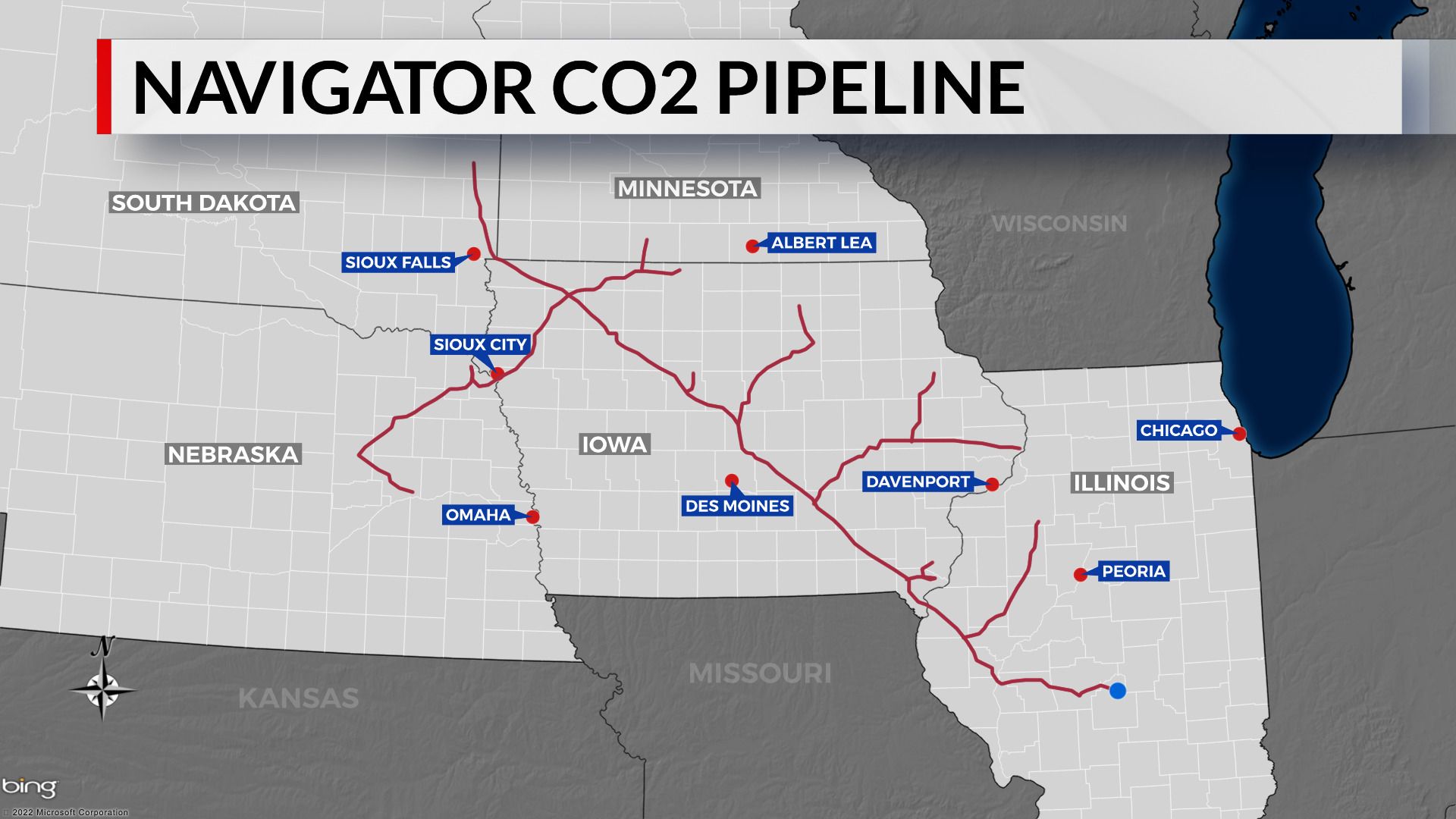
Carbon pipelines heading north and south of SD
The 2,000-mile, $3.7 billion Summit Carbon Solutions pipeline would cross 469 miles in South Dakota, carrying 12 million tons of CO2 northward each year from 32 ethanol plants in five states to a site in central North Dakota, where the CO2 would be buried and permanently stored more than a mile underground.
The South Dakota portion of the Summit Carbon Solutions project was submitted for permitting by the state Public Utilities Commission in February, and a public hearing is expected to be held before the end of 2022.
A second CO2 pipeline, a $3 billion, 1,300-mile project proposed by Navigator COs Ventures, would capture 15 million tons of CO2 each year from 20 ethanol and fertilizer plants in five states. The Navigator pipeline would cross 111 miles in South Dakota and terminate at a site in central Illinois where the CO2 would be buried 6,400 feet underground. Navigator has contacted affected landowners in South Dakota and plans to submit its pipeline permit application to the PUC this summer, said Elizabeth Burns-Thompson, a spokeswoman for Navigator.
The CCS projects would capture carbon dioxide released during the fermentation process required to produce ethanol, a corn-based product that is an additive to gasoline. The Navigator project would also capture carbon from fertilizer plants.
Fry said CCS is one of several ways that government and industry can work together to stave off climate change until America and the world can end the use of fossil fuels and reach net-zero emissions from vehicles and industry. The expense and gaps in technology are simply too great at this time to quickly reverse the world’s reliance on fossil fuels, so waiting for decades for a full solution on carbon reduction to emerge is not a sensible approach, Fry said.
Fry said the world needs to remove gigatons of carbon emissions annually to slow or stop climate change, so it is best to get started in some fashion as soon as possible.
“It’s a buffet of things we need to do,” Fry said. “We’re going to have to do it all, and carbon capture is definitely one of the pieces of the puzzle we’re going to have to do to meet our climate goals by 2030 or 2050.”
Fry called carbon emissions from ethanol plants “low-hanging fruit” in terms of how essentially simple it is to capture, transport and sequester carbon compared with reducing vehicle emissions or other technologies required to reduce carbon.
“The reality is that with the projects we’re talking about, ethanol plants, for example, they emit tons and tons of pure CO2, which is really low-hanging fruit in the capture world,” he said.
In interviews and in presentations to government officials and the public, representatives of Summit and Navigator present other potential positive outcomes from the CCS projects.
Capturing the carbon from the ethanol plants that signed onto the Summit project would be the equivalent of eliminating emissions from 2.6 million cars each year, said Jake Ketzner, vice president of communications for Summit. On its website, Navigator says its CCS project would remove the equivalent of carbon emissions from 3.2 million cars a year.
They also point to the significant investment and employment opportunities the CCS pipelines would generate.
In a recent news release, Summit said its CCS project would create more than 11,000 jobs, generate $371 million in tax revenues, provide $2.1 billion in investments with local contractors and suppliers, and pay landowners about $310 million in five states. The South Dakota portion of the project would require an overall investment of $795 million by Summit, create $440 million in labor income in the state, and generate state and local taxes of $74 million.
Navigator’s CCS project, called the Heartland Greenway, would overall create more than 17,000 jobs with $870 million in wages during construction, and generate $31 million in property taxes, the company said. In South Dakota, the Navigator project would generate $76 million in investment in the state economy and create 625 jobs during construction.
Employment on both projects would fall significantly once the projects are completed and operational.
In a presentation to the South Dakota Senate Commerce and Energy Committee in January, Ketzner told lawmakers the Summit project would also strengthen the state’s ethanol industry, whose 16 plants generate 1.2 billion gallons of ethanol a year, employ thousands of workers and provide a substantial market for state corn growers.
Ketzner said CCS projects will allow ethanol plants to reduce their carbon-emission scores to the point that they can expand their sales market in states such as California, Oregon, Washington, Colorado, New Mexico, Minnesota and New York, which have already required, or are moving toward requiring, low carbon-emission fuels for vehicles. On its website, Navigator estimates ethanol plants that participate in its CCS project could see $20 million to $40 million a year in revenue gains from selling into low-carbon markets.
Summit officials told lawmakers that ethanol plants can be eligible for $50 in federal tax credits for every ton of carbon captured during the process. Summit’s plan is to split the profit received for each ton of carbon captured with participating ethanol plants.
“The main goal is to increase profitability and long-term viability of ethanol plants across our five-state footprint,” Ketzner said. “We’re looking to make sure that our ethanol plant facilities are competitive for decades to come.”

Expense, safety and viability concerns of carbon pipelines
Summit officials told South Dakota lawmakers during the January hearing that no fatalities had ever been linked to a CCS pipeline. But that doesn’t mean piping chemicals underground for hundreds of miles is without risk.
In February 2020, a 24-inch carbon dioxide pipeline ruptured in Satartia, Miss., causing a green gas to be emitted from the break. No residents or responders died, but about 300 people were evacuated and nearly four dozen people were treated at local hospitals. Liquefied CO2 is dense and tends to stay near the ground in a leakage, making it more dangerous than chemicals that may disperse quickly into higher elevations.
Officials with Summit and Navigator say the CCS industry has learned from that incident, and that safety is the top priority for both companies.
Burns-Thompson, the Navigator spokeswoman, told News Watch that improvements have been made that will ensure greater safety on the proposed CCS lines in the Midwest. For starters, the new pipelines will be made with a flexible steel that will allow for some bending without breaking, Burns-Thompson said. In addition, the proposed CCS pipelines will not carry hydrogen sulfide, which was present in the Satartia line and may have contributed to erosion. Finally, she said, the Satartia line was thought to have been exposed to heavy rains and flash flooding that were unlikely to occur on the new CCS lines in the Midwest.
Meanwhile, research and reports from the field provide uneven results when it comes to efforts to capture, sequester or reuse CO2.
A recent report from a large coal-fired power plant in Canada indicated the company was only able to capture 44% of its carbon emissions, less than half of the 90% it projected (the company blamed problems with a carbon compressor for the shortfall). A large power plant in Texas, the Petra Nova facility, was the only coal-fired energy plant in the country using CCS from 2017-2020 — but the CCS effort there was ended after three years due to a drop in oil prices and an inability to make the finances work on the CCS project.
In a recent open letter published as an advertisement in The Washington Post, dozens of climate, environmental and civic groups urged officials in the U.S. and Canada to rethink support for CCS processes and pipelines.
“On behalf of our millions of members and supporters across the United States and Canada, we call on policymakers to recognize that carbon capture and storage is not a climate solution. It is a dangerous distraction driven by the same big polluters who created the climate emergency,” the letter stated, arguing that CCS is unnecessary, does not work and creates needless risks for communities where pipelines are located.
A 2020 study from the University of California-San Diego found that 80% of carbon-capture projects aimed at reuse of CO2 into commercially viable products have failed.
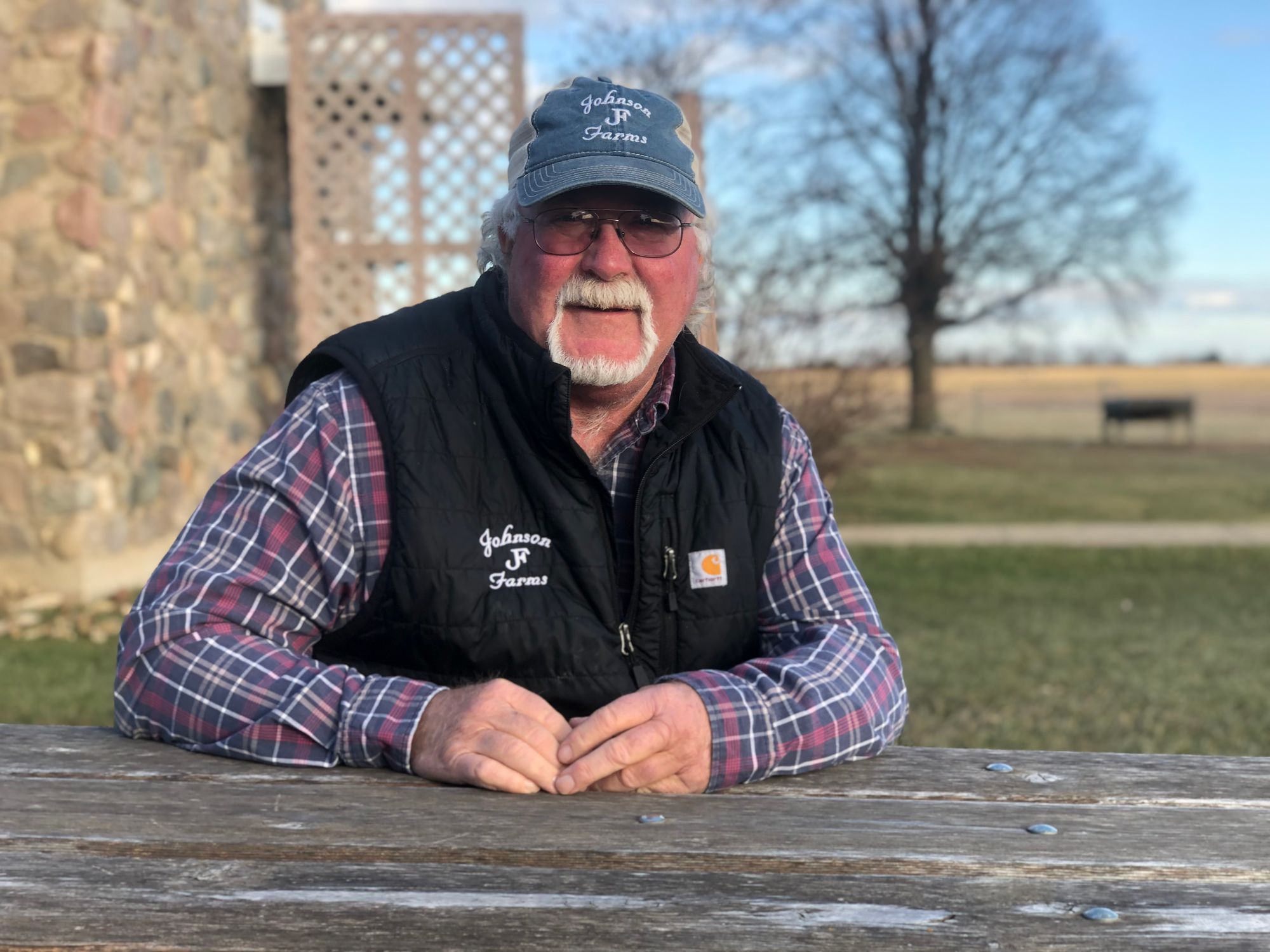
Charlie Johnson is an organic farmer who leases farmland near Madison, S.D., and who opposes the CCS pipeline that may pass through the land he farms. Johnson went through a similar process when the Dakota Access Pipeline went through the land he works.
Johnson’s disdain for the CCS project transcends damage to the earth. Johnson simply believes that there are more worthwhile, viable and sensible solutions to reducing climate change and carbon emissions that don’t include spending billions on capture technology and underground pipelines.
“What we’re doing is creating stress and anxiety for thousands of landowners, we’re tearing up the land, we’re investing billions of dollars that could be invested better,” Johnson said. “Let’s get back to simpler approaches; let’s get back to capturing carbon by using nature itself.”
Johnson argues that the ethanol industry and its heavy reliance on using land to grow corn, which requires fertilizers, is doing more harm than good to the environment. The billions used to fund CCS research and operations could be better used to protect prairie and forest lands and plant more trees and plants that naturally consume CO2, he says.
Sen, from the Institute for Policy Studies, said Johnson is correct in noting that there are better, far less expensive ways to reduce carbon emissions or increase natural suppression of carbon in the atmosphere.
Sen said ethanol plants maintain a pattern of overuse of land and resources, and that CCS does not make sense because it allows continued production and use of fossil fuels.
“Trying to extend the life of corn ethanol for internal combustion engines at this point is counter productive in terms of the climate solutions we need,” he said. “From just a straight-up market-competition standpoint, there is no justification to do carbon capture because you can build renewable energy instead in the electrical sector.”
Sen added that the many billions of dollars being invested into CCS technology and pipelines could be used to dramatically speed up a transition to low-carbon or net-zero carbon emission vehicles and energy sources.
“Is this the best use of our investment? I would argue very strongly, no. If you take those governmental dollars and tax breaks and subsidies, and you put the money not into biofuels or fossil fuels, and instead into a massive expansion of public transportation or into research and development of electric vehicles and energy storage to bring costs down, that’s a far more productive use of that funding.”
Two SD ethanol plants, two different plans
Dana Siefkes Lewis is the chief administrative officer of
Redfield Energy and the president of the South Dakota Ethanol Producers Association.
Siefkes Lewis said some but not all of the 15 ethanol plants in South Dakota have signed on to supply CO2 to the Summit pipeline; Redfield is one producer that is planning to supply carbon dioxide to Summit through a feeder line to the main pipeline heading to North Dakota.
Speaking for Redfield Energy and not the association as a whole, Siefkes Lewis said the company is looking at carbon capture as one of several ways to reduce its carbon footprint.
“Everything is on the table as far as what would lower our carbon score, so we’re looking at any idea because we can’t put everything in the carbon-capture basket,” she said.
Redfield Energy sees carbon capture as a win-win that will allow it to reduce carbon emissions into the atmosphere while also producing ethanol with a lower carbon score that could enable the company to expand sales to states like California, which is requiring fuels to be produced through more environmentally favorable methods. To date, Redfield Energy does not sell ethanol to low-carbon markets in the U.S., she said.
“Whether you believe in climate change or not, California does,” Siefkes Lewis said.
Reducing carbon emissions at Redfield — which does not capture any carbon emissions now — is a way to keep the company as competitive as possible in the U.S. ethanol market, Siefkes Lewis said. “We really believe that if we are not on the lookout for a way to lower our carbon score, the plants around us will (be),” she said.
Under the current proposal, Summit would pay for the systems to capture carbon from Redfield Energy and for the processing and piping away from the plant, she said.
Siefkes Lewis said Redfield worked with Summit to ensure safety protocols would be in place. She also is hopeful that the concerns of landowners on the pipeline route will be addressed and satisfied before the pipeline gets built.
“We have safety rules we have to follow, and we believe this is a good project for us,” she said. “But we also want to be sure that our members and the landowners around us are OK with it.”
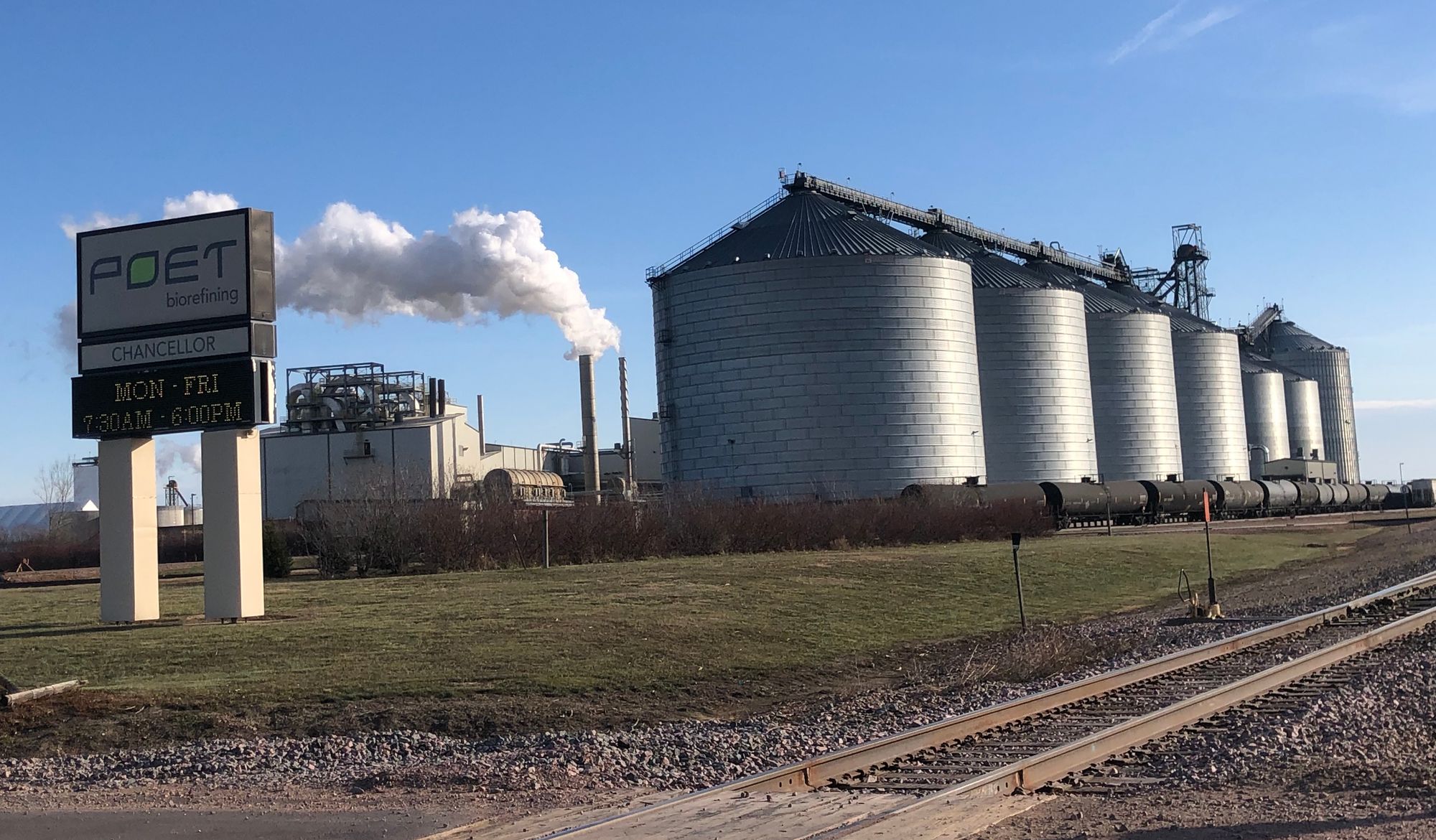
2023 UPDATE: The information below was valid in May 2022, but Poet Biofuels in June 2022 changed course and said it would sign on to provide CO2 to the Navigator project.
Burns-Thompson, Navigator’s spokeswoman, said the company plans to connect its pipeline to Poet plants in phases and have the system operational by 2025.
Meanwhile, POET Biofuels, the world’s largest producer of ethanol, with company headquarters in Sioux Falls, so far has decided not to participate in the CCS pipelines proposed in the state, according to Erin Smith, spokeswoman for POET.
POET, which has 33 ethanol plants in eight states including South Dakota, already captures carbon at its plants and has an aggressive approach to finding ways to reuse, rather than simply sequester, the carbon emitted from its plants, according to the company website.
“POET continues to explore all available options to achieve our goal of 70% reduction in carbon compared to gasoline by 2030,” Smith wrote in an email to News Watch. “While POET isn’t involved in any CO2 pipelines at this time, our team continues to do our due diligence regarding long-term viability and public safety.”
Last year, POET released its first Sustainability Report, which explains the company’s efforts to reduce carbon emissions and reuse carbon it captures.
“We are currently supplying a nationwide customer base with CO2 applications that include beverage carbonation, food processing, municipal water treatment, fire suppression and agricultural applications,” the company says on its website.
POET’s goals include reducing the carbon intensity of its biofuels by 70% by 2030 and becoming fully carbon-neutral by 2050.
POET uses captured carbon to produce dry ice, which is used in transportation of many food and medical products, including COVID-19 vaccines, according to the company’s website.
“POET’s high quality, pure dry ice is perfect for food, medical and e-shipping applications. We have the capability to produce many forms of dry ice in order to meet our customers’ specific needs,” the company says.
— Next installment: Why many South Dakota landowners are opposed to the pipeline projects.


